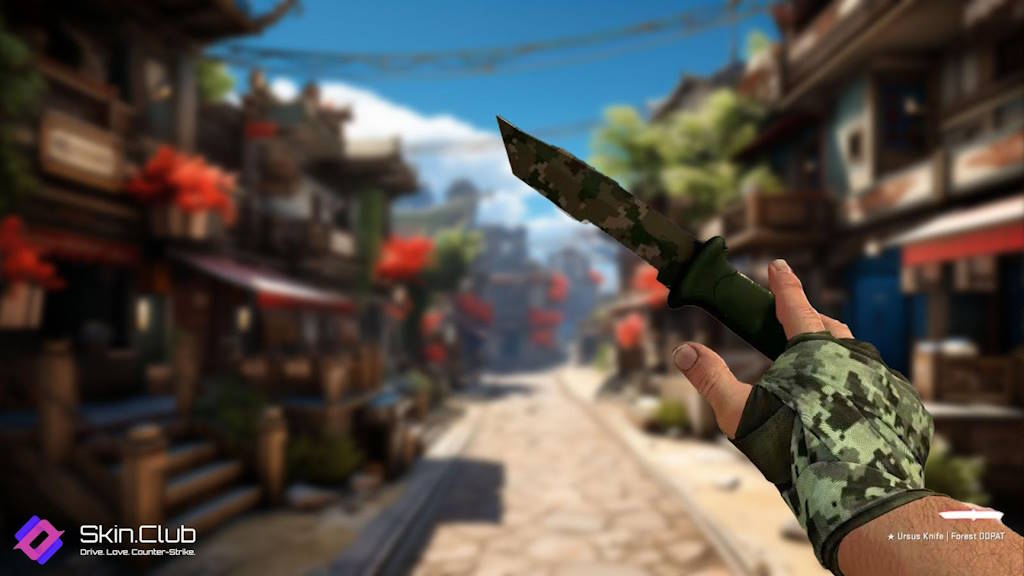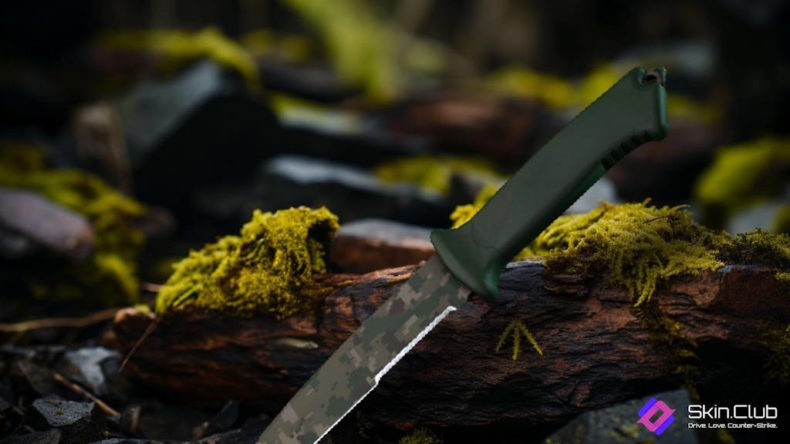The world of Counter-Strike: Global Offensive (CS:GO) is filled with a myriad of fascinating components, but none are as captivating as the skins that embellish the virtual weaponry. In this environment of strategic combat, the pride and power one feels from owning a unique skin can’t be underestimated. One such distinctive and highly sought-after skin is the Ursus Knife | Forest DDPAT, which emerged as a statement piece amidst the extensive CS:GO inventory.
As diverse and dynamic as the players themselves, CS:GO skins aren’t just aesthetic elements – they represent a parallel world of collection, trade, and identity within the gaming community. Each skin tells a unique story, reflecting its journey from inception to the hands of the player wielding it. This narrative is powerfully echoed in the history and life, marking its place in the game’s evolution.
Stepping beyond the virtual battleground, the possession of a rare skin resonates with a player’s identity, emphasizing their dedication and passion for the game. To understand this phenomenon, one must delve into the birth, evolution, and impact of such skins in the CS:GO culture, as well as their status in eSports and the factors contributing to their rarity.
The Birth
The introduction of the skin, amongst others, was a defining moment in CS:GO’s history. When the Arms Deal update was launched in August 2013, it changed the game’s dynamics by introducing weapon skins. This new feature brought in an added element of personalization and offered players a chance to flaunt their style and preference on the battlefield.
The Ursus Knife, a part of the Horizon Case, was introduced much later, in August 2018. The knife’s distinctive blade shape and sleek animation quickly captivated the players’ imagination, while the Forest DDPAT pattern (short for Digital Disruptive Pattern) offered an aesthetic appeal with its military camouflage pattern.
Although Forest DDPAT wasn’t the most exotic pattern available, its understated style and the Ursus Knife’s unique shape combined to create a skin that was both practical and striking. This blend of form and function was a recipe for success, and the skin quickly found favor among players, kickstarting its journey into the annals of CS:GO’s most popular skins.
Evolution
The evolution of the CS:GO skins closely mirrors the evolution of the game and its community. Over the years, these skins have transcended their initial role as cosmetic enhancements and become a vital part of the game’s economic system.
Developers, Valve, have continually supported the skins market by introducing new designs, cases, and skins collections. This constant influx of new content, combined with the retiring of older cases, created a dynamic market where certain skins grew in value and desirability over time.
Moreover, the introduction of features like the Steam Market and third-party trading platforms gave players a chance to trade and sell their skins. This birthed an entire virtual economy revolving around CS:GO skins, where the value of a skin was determined not just by its in-game utility, but also by its demand and rarity in the market.
Popularity and Trading Scene
CS:GO skins have become a major attraction in the gaming community, not just for their aesthetic appeal but also for the trading opportunities they present. The skin, with its unique blend of practicality and style, has become a sought-after item in this vibrant trading scene.
The rise of third-party trading platforms, coupled with the Steam Market, created a robust trading ecosystem. These platforms allowed players to buy, sell, and trade skins, adding another layer of engagement to the CS:GO experience. Market value of skins fluctuates with supply and demand, and limited edition or rare skins like the Forest DDPAT often command high prices.
In this scenario, the skin’s popularity becomes a crucial factor determining its trading value. The more desired a skin is, the higher its potential price in the market. The skin, with its unique shape, fluid animation, and understated pattern, checks all the boxes of popularity, making it a star player in the trading scene.
Impact on CS:GO Culture
CS:GO skins have had a profound impact on the game’s culture. These skins have become status symbols, representing a player’s commitment, skill level, and style. Flaunting a rare or high-value skin becomes a matter of prestige and personal satisfaction.
Furthermore, these skins have spurred a thriving economy and trading culture within the CS:GO community. Players spend real money to buy skins, trade them, and sometimes even make a profit. This vibrant economy adds another dimension to the game, making it not just a battle simulator but also a virtual marketplace.
The culture of skins also extends to community engagement and participation. Players often come together to discuss, appraise, and trade skins. Sites and forums dedicated to CS:GO skins have become popular gathering spots for the community, strengthening the social aspect of the game.
Rarity and Rarity Factors
A CS:GO skin’s rarity is primarily determined by its grade or quality, ranging from Consumer Grade (most common) to Covert and Extraordinary (most rare). The Forest DDPAT falls into the latter category, making it a highly sought-after skin.
Factors such as the skin’s condition also contribute to its rarity. This ranges from Battle-Scarred (most worn-out) to Factory New (no wear and tear). A Factory New, therefore, is an especially rare find.
Another critical factor is the skin’s pattern. Each Forest DDPAT pattern is unique, and certain pattern variations are rarer and more desirable than others. This, along with the skin’s popularity and the demand-supply dynamic in the trading market, ultimately determines its value and rarity.
In eSports

CS:GO skins have carved out a significant niche within eSports. With CS:GO being one of the leading games in the eSports scene, its skins carry a lot of prestige.
During eSports tournaments, players often showcase their skins as a way to express their identity and style. A rare skin not only adds to the player’s persona but also can potentially intimidate opponents. Furthermore, game broadcasters frequently discuss and showcase players’ skins during matches, adding another layer of excitement to the viewing experience.
The trading of skins is also prominent in eSports, with players, fans, and collectors actively engaging in the trading scene. Rare skins have often been sold for thousands of dollars, adding a financial incentive to the mix. This has made CS:GO skins an integral part of the eSports economy.
Conclusion
The journey of the skin mirrors the evolution of CS:GO, its skins, and the culture surrounding them. From their inception to becoming an integral part of the game’s economic and social fabric, CS:GO skins have transformed the gaming experience.
The Forest DDPAT serves as an emblem of this evolution, symbolizing the blend of style, identity, rarity, and economic value. It stands as a testament to the unique gaming culture that has developed around CS:GO, stretching beyond the virtual battlefield and into the realms of collection, trade, and personal expression.
Whether you’re a passionate player, an avid collector, a dedicated trader, or a spectator of eSports, the world of CS:GO skins, with its unique gems offers a fascinating universe to explore and engage with.





